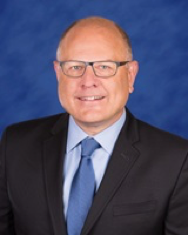Three Strategies That Improve Access to Rural Healthcare
While healthcare is often taken for granted in urban communities, many rural populations struggle to access care. Here’s how one healthcare organization addresses rural impediments and their effects on health.

Leenay

Rural health-a mainstay of American life and culture-is important and we should celebrate our nation’s rural communities all year long.
While nearly one-in-five Americans lives in a rural community, these areas have seen an overall population decline since 2010. For years, economic and social factors have lured many away, leaving some rural communities with a weakened infrastructure, aging population and an overextended healthcare system.
While healthcare is often taken for granted in urban communities, many rural populations struggle to access care. For example, some women in rural America must drive 200 miles simply to see an OB/GYN, and while opioid deaths are 45% higher in rural areas compared to urban areas, treatment options can be limited. Isolation also has a broad impact. Research shows young people in rural communities are twice as likely to commit suicide as their urban peers.
According to the Kaiser Family Foundation, people living in rural areas are less likely to be in the labor force, more likely to have a disability, and more likely to be low-income than people living in other areas. As a result, Medicaid plays a significant role in rural healthcare, covering 21% of rural residents, compared with 16% of residents in urban areas. In California, Hawaii, Arizona, Arkansas, and Florida, the Medicaid coverage rate in rural areas is 10 to 16 percentage points higher than in urban areas.
Obstacles to accessing care
While Medicaid coverage is critical, rural communities face many other obstacles to accessing quality healthcare in rural communities. Issues range from lack of qualified specialty services to shortages of basic programs and services such as professional counseling, weight-loss programs, and certified caregivers.
Transportation, in particular, can be a significant obstacle. According to AARP, many rural communities have little or no public or private transportation. If it is offered, it’s sporadic at best, and the distances required would tax even a well-functioning local system. Lack of transportation may result in missed doctors’ appointments; missed trips to the pharmacy to pick up medications, and an inability to get care quickly in an emergency.
Related: How To Develop A Targeted Care Management Approach For Addressing Social Determinants Of Health
Social isolation is another obstacle. Without the built-in proximity of neighbors, social activities or, at times, the availability of reliable internet and cellular service, rural life can lead to social isolation and loneliness that are harmful to one’s health. One study published in the journal Heart found isolation and loneliness could lead to an increased risk of acute myocardial infarction (AMI) and stroke.
Despite the barriers, there are bright spots where organizations have combined technology and old-fashioned face-to-face interaction to address rural impediments and their effects on health.
In the case of WellCare, we have seen success via three “Ts”: transportation, telehealth, and touchpoints. For transportation, we contract with non-emergency medical transportation (NEMT) services and help Medicaid members get to-and keep-their medical appointments. We also help reimburse some family members who help address transportation shortages by taking their loved ones to medical appointments. Finally, we meet members where they are, bringing healthcare directly to them, whether through mobile mammography and dental units to health fairs and community Welcome Rooms.
Telehealth continues to be a useful tool for reaching rural populations on Medicaid and increasing access to urgent care and specialty services. From blood pressure monitoring to medication management to behavioral health treatment, connecting via a computer or tablet allows us to be more efficient, overcome issues of distance and address physician shortages. Most importantly, however, telehealth can add a level of social connectedness helping rural populations further overcome issues of isolation.
Finally, there are touchpoints, or interactions with on-the-ground professionals who are critical to improving rural health. By employing frontline public health professionals who have an innate understanding of the communities in which they work, we can help rural Americans overcome barriers to care. We can help connect them to the right doctors and specialists and help them navigate the local social safety net to address barriers to care and live better, healthier lives.
While we have made strides toward improving rural healthcare, there is still much work to be done. By employing both technological and people-powered solutions, we will make inroads in leveling the healthcare playing field and doing right by our nation’s rural communities.
Mark Leenay is executive vice president and chief medical officer of WellCare Health Plans, Inc.
Extending the Capabilities of the EHR Through Automation
August 2nd 2023Welcome back to another episode of "Tuning In to the C-Suite," where Briana Contreras, an editor of Managed Healthcare Executive, had the pleasure of chatting with Cindy Gaines, chief clinical transformation officer at Lumeon.
Listen